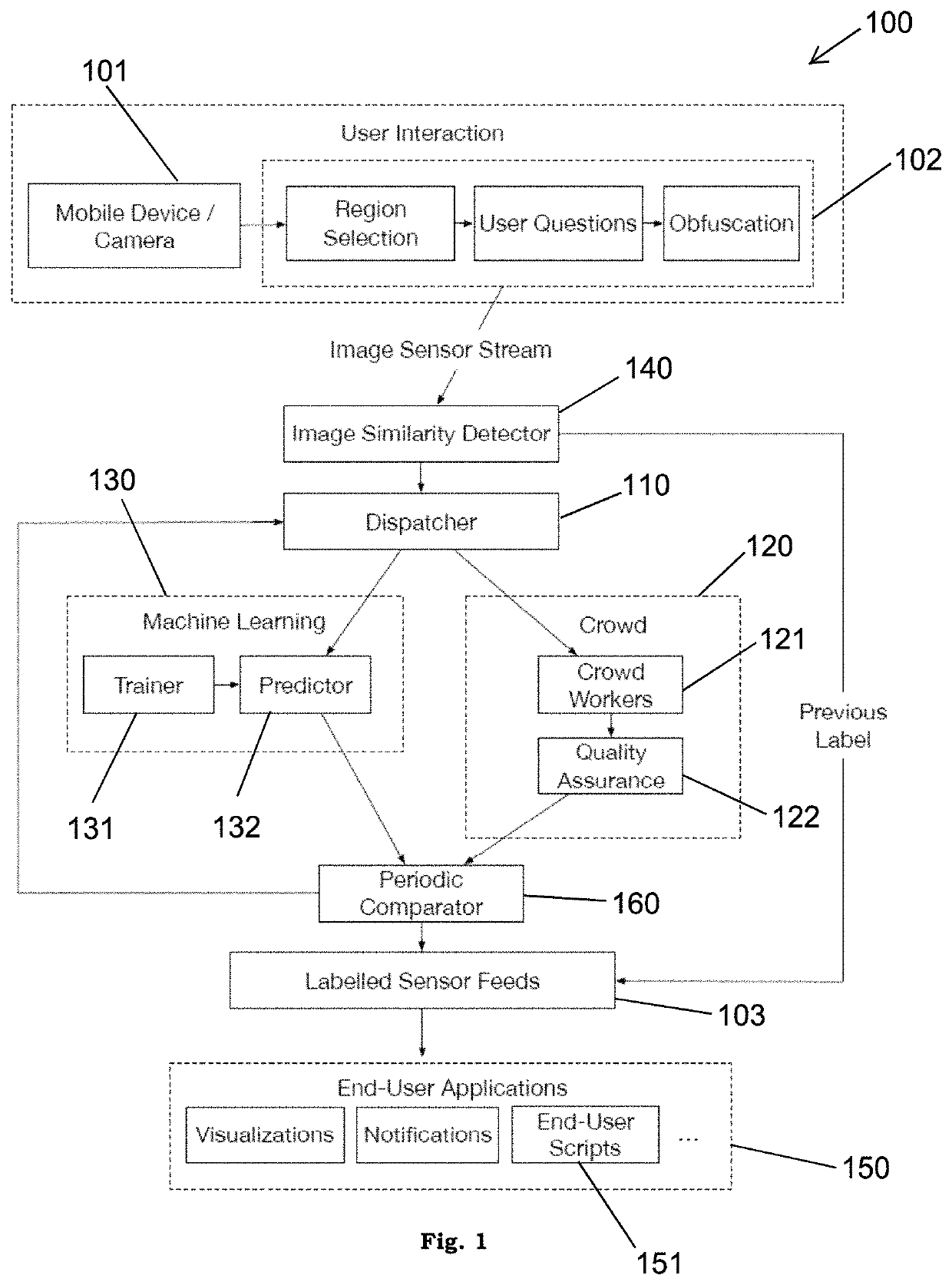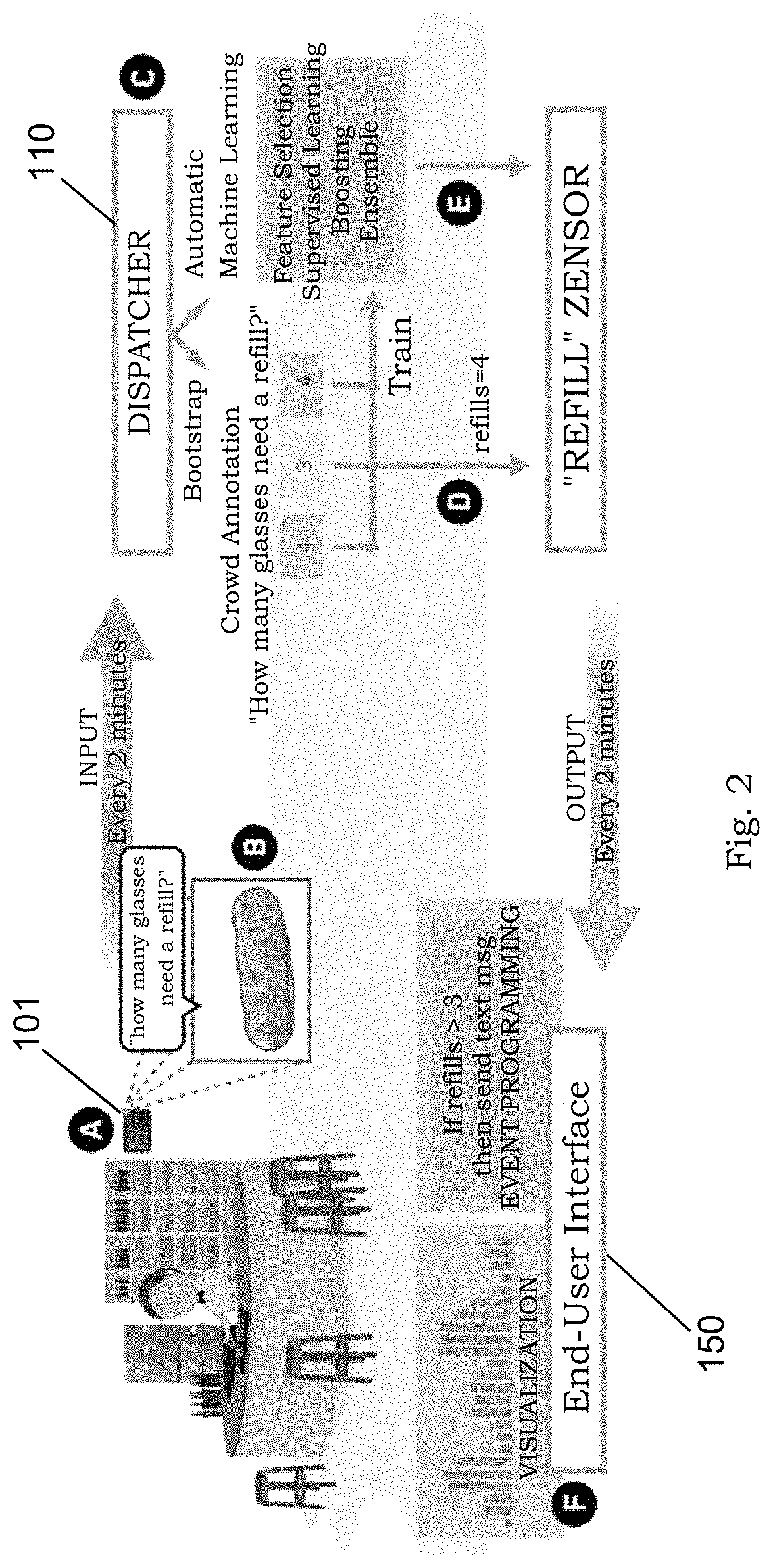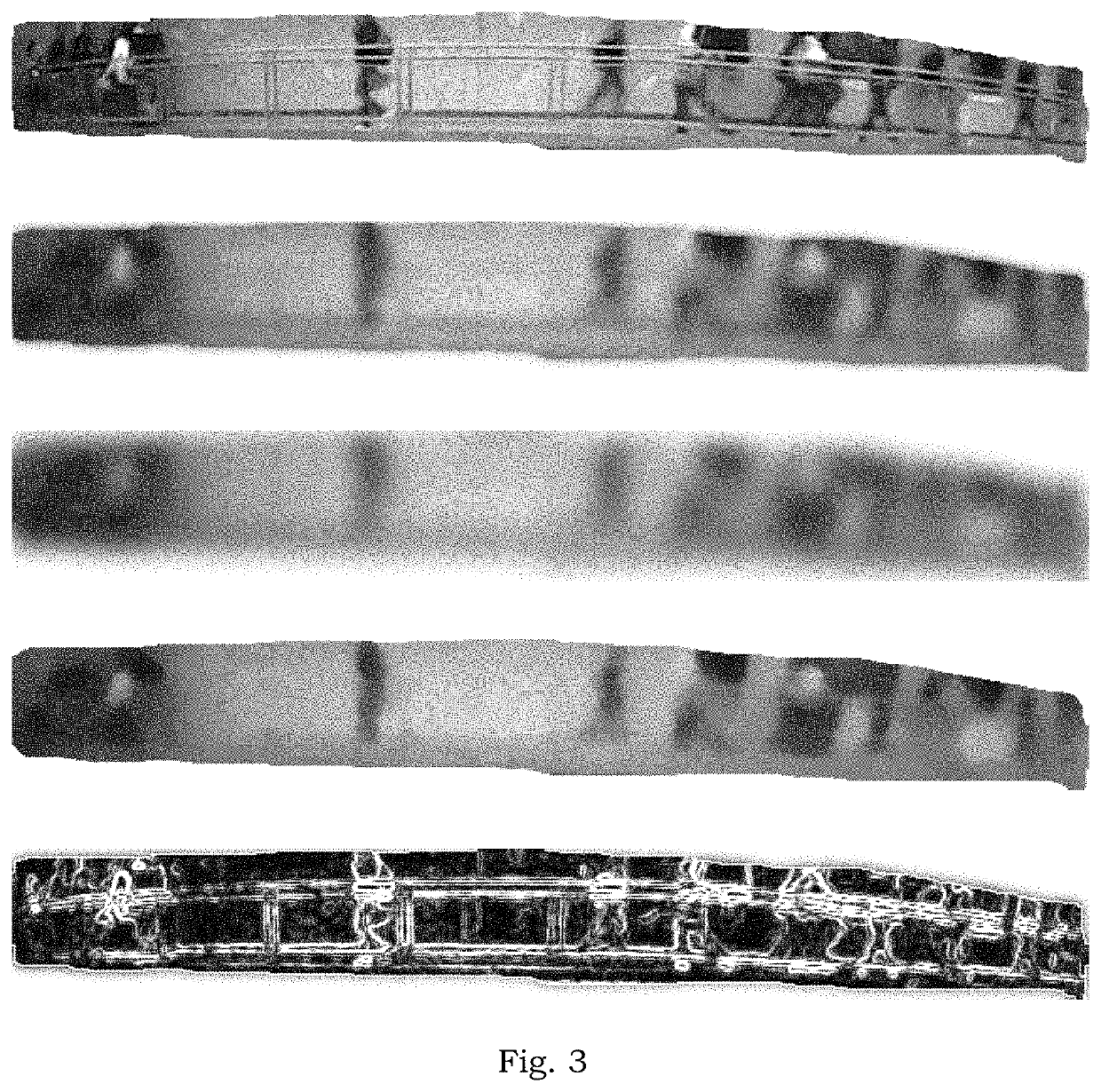System and method for adaptive, rapidly deployable, human-intelligent sensor feeds
a sensor and intelligent technology, applied in the field of adaptive sensors, can solve the problems of system cost, system invasiveness, and system special purpose, and achieve the effect of continuous sensor accuracy
- Summary
- Abstract
- Description
- Claims
- Application Information
AI Technical Summary
Benefits of technology
Problems solved by technology
Method used
Image
Examples
Embodiment Construction
[0019]In accordance with one embodiment, FIG. 1 shows the architecture of a sensor system 100. In this embodiment, the system 100 comprises a sensor 101 that provides a sensor feed for further processing and analysis by different components of the system 100. In this particular embodiment, the sensor 101 comprises a mobile electronic device with a camera. Mobile electronic devices, such as cellular phones, are especially suited for use as a rapidly deployable sensor 101 because of their built-in computer, battery, and communication abilities. However, many other devices capable of providing sensor output can be used, such as tablets, security cameras, wi-fi cameras, and Kinects. The time-series data from these types of sensors 101 offer rich contextual information about an activity or environment far more than what basic sensors (e.g., proximity sensors) can provide.
[0020]The feed or data from the sensor 101, such as an image, is sent to the interaction module 102, which provides a ...
PUM
 Login to View More
Login to View More Abstract
Description
Claims
Application Information
 Login to View More
Login to View More - R&D
- Intellectual Property
- Life Sciences
- Materials
- Tech Scout
- Unparalleled Data Quality
- Higher Quality Content
- 60% Fewer Hallucinations
Browse by: Latest US Patents, China's latest patents, Technical Efficacy Thesaurus, Application Domain, Technology Topic, Popular Technical Reports.
© 2025 PatSnap. All rights reserved.Legal|Privacy policy|Modern Slavery Act Transparency Statement|Sitemap|About US| Contact US: help@patsnap.com



